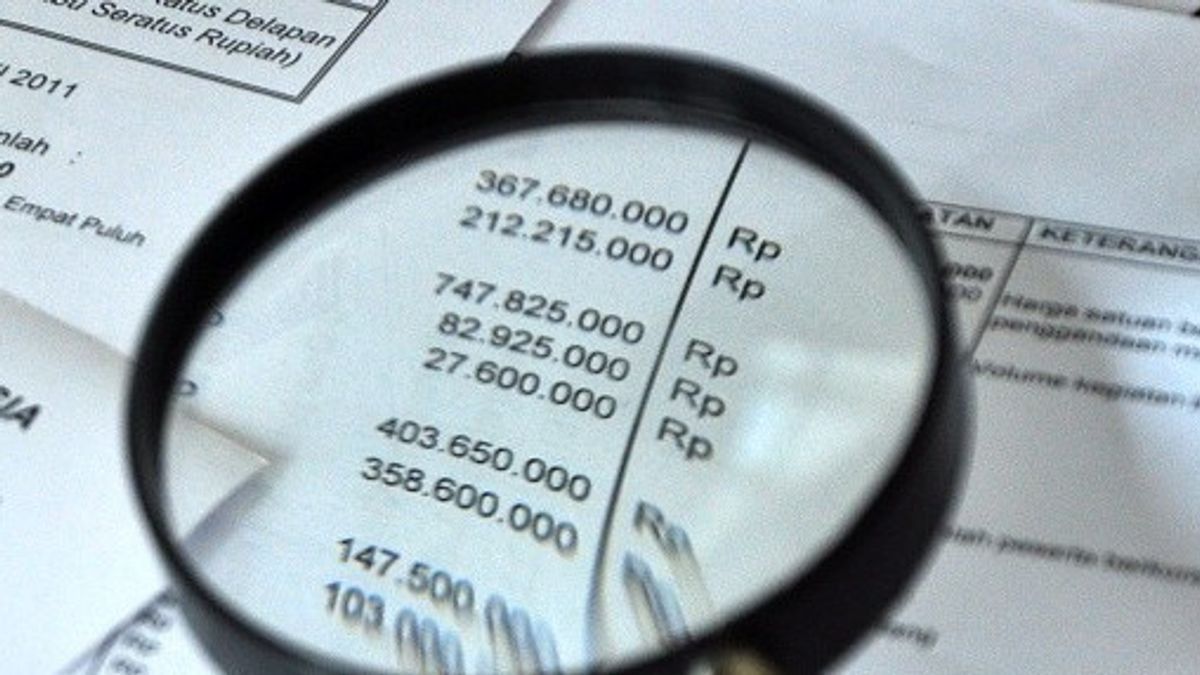YOGYAKARTA – The Ministry of Finance (Kemenkeu) released the October 2022 edition of Indonesia's Foreign Debt Statistics (SULNI).
It should be noted that the SULNI is a joint publication between Bank Indonesia and the Ministry of Finance that presents data on the external debt of the Central Government, Bank Indonesia, and the private sector.
The October 2022 edition of the SULNI contains data on the external debt of the Central Government, Bank Indonesia, and the private sector, for the period of August 2022.
Indonesia's Foreign Debt Position in August 2022
Indonesia's External Debt (ULN) in August 2022 declined again. Indonesia's external debt position at the end of August 2022 was recorded at 397.4 billion US dollars.
This figure is lower than the position of external debt in the previous month of 400.2 billion US dollars, quoted by VOI from the official website of the Ministry of Finance.
This development was caused by a decline in external debt from the public sector (Government and Central Bank) and the private sector.
On an annual basis, the position of external debt in August 2022 contracted by 6.5 percent (yoy), deeper than the contraction in the previous month of 4.1 percent (yoy).
Government External Debt Position in August 2022
Government external debt in August 2022 also showed a downward trend. The Government's external debt position in August 2022 was 184.9 billion US dollars, lower than the previous month's position of 185.6 billion US dollars.
On an annual basis, the Government's external debt contracted by 10.9 percent (yoy), deeper than the contraction in July 2022 which was 9.9 percent (yoy).
The decline in Government external debt was due to a decrease in loans in line with higher loan repayments compared to loan withdrawals to support the financing of priority programs and projects.
Meanwhile, the net Government Securities (SBN) position increased in line with the increase in domestic SBN inflows, which reflected the maintained confidence of foreign investors in the midst of high uncertainty in global financial markets.
The government remains committed to maintaining credibility by fulfilling obligations to pay principal and interest on debt in a timely manner, as well as managing external debt in a prudent, credible and accountable manner.
Withdrawal of external debt carried out in August 2022 is still directed at financing the productive sector and efforts are made to continue to accelerate the acceleration of the National Economic Recovery (PEN).

Government external debt support in meeting financing for the productive sector and priority spending needs includes, among others, the health services sector and social activities (24.5 percent of the total government external debt), the education services sector (16.6 percent), the government administration sector, defense, and insurance. compulsory social services (15.2 percent), the construction sector (14.2 percent), and the financial services and insurance sector (11.7 percent).
The position of Government external debt is relatively safe and under control, considering that almost all of them are long-term external debt with a share of 99.9 percent of the total government external debt.
Private External Debt Position in August 2022
Private external debt also continued the downward trend. The position of private external debt in August 2022 was recorded at 204.1 billion US dollars, a decrease from the previous month's position of 206.1 billion US dollars.
On an annual basis, private external debt contracted 2.0 percent (yoy), deeper than the 1.2 percent (yoy) contraction in the previous month.
This development was caused by a contraction in external debt of financial corporations and non-financial corporations by 3.6 percent (yoy) and 1.6 percent (yoy), partly due to net payments of trade payables and other obligations.
By sector, the largest private external debt comes from the financial services and insurance sectors; electricity, gas, steam/hot water, and cold air procurement sectors; mining and quarrying sector; and the manufacturing sector with a share of 77.5 percent of the total private external debt. This external debt remains dominated by long-term external debt with a share of 75.1 percent of total private external debt.
Indonesia's Foreign Debt Structure Stays Healthy
The structure of Indonesia's external debt remains healthy, supported by the application of prudential principles in its management.
Indonesia's debt in August 2022 remained under control, as reflected in the ratio of Indonesia's external debt to Gross Domestic Product (GDP) which was maintained at around 30.4 percent, down from the ratio in the previous month of 30.7 percent.
In addition, the structure of Indonesia's external debt remains healthy, as indicated by Indonesia's external debt which remains dominated by long-term external debt, with a share of 87.1 percent of total external debt.
The English, Chinese, Japanese, Arabic, and French versions are automatically generated by the AI. So there may still be inaccuracies in translating, please always see Indonesian as our main language. (system supported by DigitalSiber.id)













